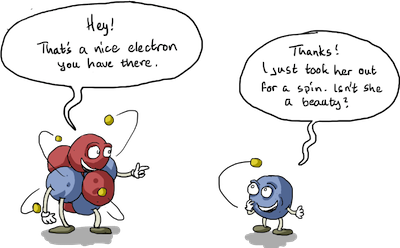The Theme of Currency in Atoms, Molecules, and Ions
The Chemistry of Money
Did you know there's a lot of chemistry that goes into making money? It's all about the Benjamins.
First consider paper money. Grab your wallet and pull out a bill. Notice how it doesn't feel like your standard printer paper. Banknotes are made from a special paper that is very dense, making it stronger and more flexible compared to your standard run-of-the-mill paper. In most cases, the paper that money is made out of is a mix of linen with various other textile fibers. Think of the amount of times that each bill is passed through a soda machine, exchanged between hands, and crammed into a wallet. It's no wonder that paper money needs to be made from a strong and long-lasting material.

Linen (Image from here.)
How does chemistry play a role? The long-lasting durable paper that money is made from is usually infused with gelatin or polyvinyl alcohol in order to make it stronger.
Now, take a closer look at the bill you pulled out earlier. Do you notice anything special about it other than its thickness? There are usually two distinctive features of paper money.
The first is the security thread. Older paper money might not have this but it is usually included in most modern currency to thwart thieves and counterfeiters. It's included because it is very hard to reproduce. It usually consists of metallic, fluorescent, and magnetic components. There is chemistry all over the place.
Another security feature of paper money is the watermark. Special chemicals are introduced during the paper molding process to create a unique and difficult to reproduce watermark.
All national mints are very secretive about their processes, so we're not totally sure which chemicals are used. The major aspect of introducing chemistry into the currency making process is to avoid fraud and counterfeiters so it makes sense to keep all of this info a secret.

If you have an extra hour on your hands, highly recommend watching this video offered by the American Chemical Society. Trust us, it totally beats another Keeping Up with the Kardashians Marathon.